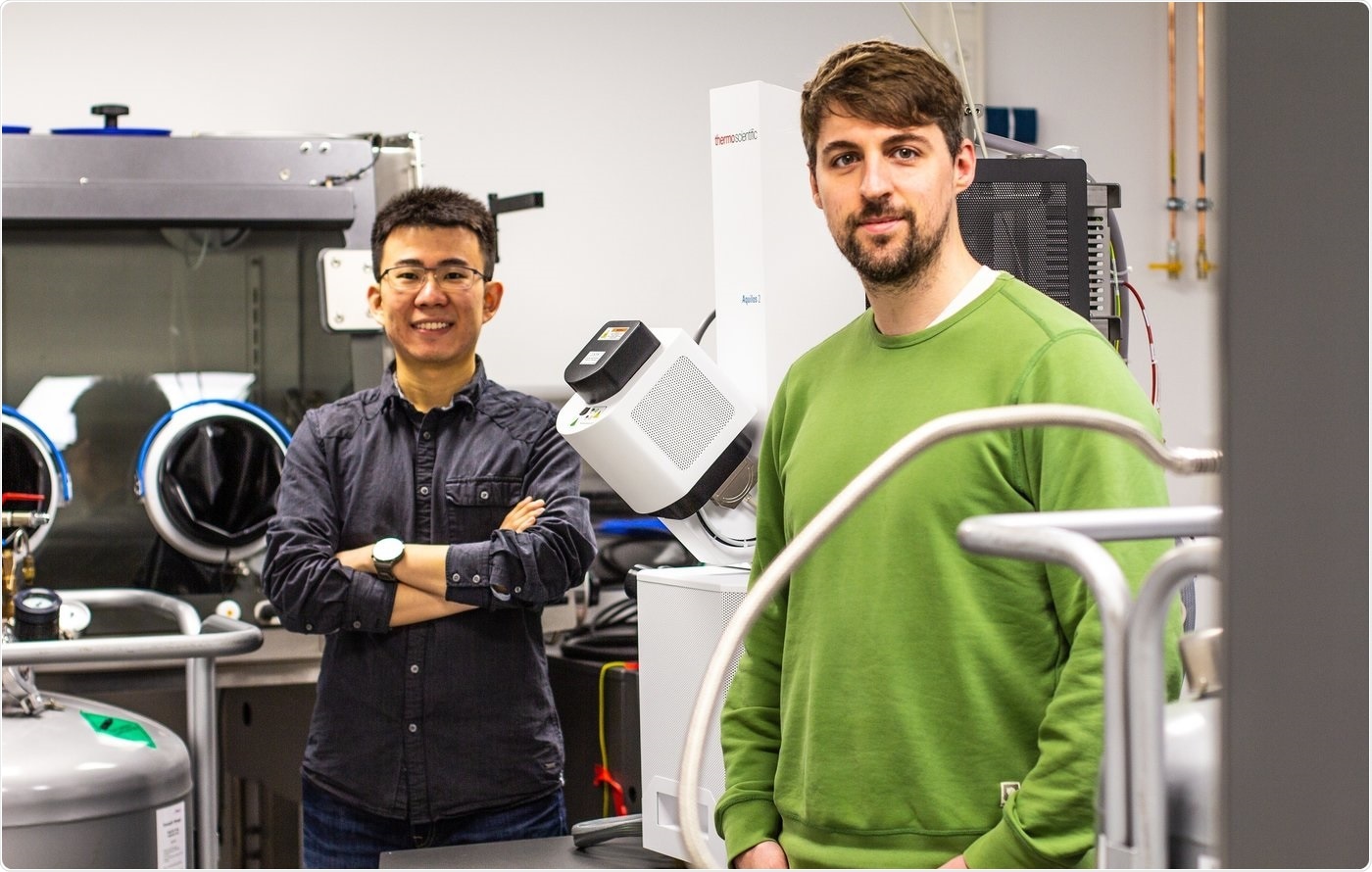Using electron cryo-tomography (cryo-ET), researchers have created the first high-resolution 3D image of the sarcomere—the fundamental contractile unit of the heart muscle and skeletal cells.

First Authors Dr Michael Grange and Zhexin Wang at the Aquilos Cryo-FIB (Thermo Fisher Scientific). Image Credit: MPI of Molecular Physiology.
The international research team, headed by Stefan Raunser, the Director of the Max Planck Institute of Molecular Physiology in Dortmund, in association with Mathias Gautel from the King's College in London, has recently described their findings in the online edition of the Cell journal.
The ability of the cryo-ET technique to image structures directly in frozen muscle cells could lead to future medical therapies for muscle diseases and offer a deeper understanding of the aging process.
Sarcomeres are essentially small repeating subunits of myofibrils, which are long cylinders that bundle collectively to create the muscle fibers. Within the sarcomeres, protein filaments called actin and myosin interact to produce muscle relaxation and contraction.
Until now, conventional experimental methods to study the function and structure of muscle tissues had relied on reconstructed protein complexes or experienced a low resolution.
Electron cryo-tomography, instead, allows us to obtain detailed and artefact-free 3D images of the frozen muscle.”
Stefan Raunser, Director, Max Planck Institute of Molecular Physiology
An old technique flexes its muscles
For a long time, cryo-ET was a proven yet niche technique. However, the latest technological developments in cryo-EM and the recent advancement of cryo-focused ion beam (FIB) milling are driving the resolution of cryo-ET.
Analogous to the cryo-EM technique, scientists flash-freeze the biological specimen at an extremely low temperature (−175 °C). The specimen retains its fine structure and hydration through this process and stays close to its native state.
Following this, FIB milling is used to remove excess material and achieve an optimal thickness of about 100 nm for the transmission electron microscope, which captures many images while the specimen is tilted along an axis. Finally, computational techniques rebuild a 3D image at high-resolution.
Raunser’s group applied the Cryo-ET technique to mouse myofibrils extracted at the King’s College and achieved a resolution of 1 nm (or a millionth of a millimeter, sufficient to observe fine structures inside a protein).
We can now look at a myofibril with details thought unimaginable only four years ago. It’s fascinating!”
Stefan Raunser, Director, Max Planck Institute of Molecular Physiology
Fibers in their natural context
The measured reconstruction of myofibrils demonstrated the 3D organization of the sarcomere, such as the subregions I-, M-, and A-bands, as well as the Z-disc, which spontaneously forms a more uneven mesh and assumes different conformations.
The researchers used a specimen with myosin tightly bound to actin, reflecting a stage of contracting muscle known as the rigor state. For the first time, the team was able to observe how two heads of the same myosin attach to an actin filament in a native cell. The researchers also found that the double head interacts with the same actin filament and was also spliced between a pair of actin filaments.
This phenomenon was never observed before and reveals that proximity to the next actin filament is more powerful than the cooperative effect between the adjacent heads.
This is just the beginning. Cryo-ET is moving from niche to widespread technology in structural biology. Soon we will be able to investigate muscle diseases at molecular and even atomic level.”
Stefan Raunser, Director, Max Planck Institute of Molecular Physiology
Although mouse muscles are almost the same as those of humans, scientists have planned to examine muscle tissue derived from pluripotent stem cells or obtained from biopsies.
3D arrangement of thin and thick filaments and the cross-bridges within a sarcomere.
3D arrangement of thin and thick filaments and the cross-bridges within a sarcomere. Video Credit: MPI of Molecular Physiology.
Source:
Journal reference:
Wang, Z., et al. (2021) The molecular basis for sarcomere organization in vertebrate skeletal muscle. Cell. doi.org/10.1016/j.cell.2021.02.047.